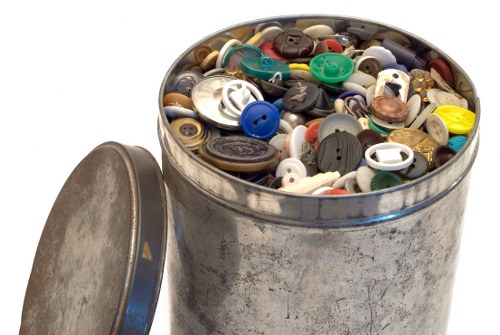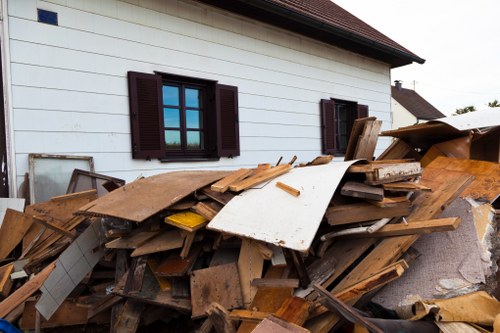Furniture Collection in Council Waste Collection

Managing household waste can be a daunting task, especially when it comes to disposing of bulky items like furniture. Thankfully, many local councils offer specialized services to help residents efficiently and responsibly manage their furniture disposal needs. Understanding how furniture collection fits into council waste collection systems can save you time, effort, and ensure that your old furnishings are dealt with in an environmentally friendly manner.
Council waste collection services typically include the removal of large household items, reducing the burden on residents to transport these items to disposal sites. This service is not only convenient but also promotes community cleanliness and sustainability by ensuring that furniture is either recycled, refurbished, or disposed of properly.
In this comprehensive guide, we will explore the various aspects of furniture collection in council waste collection, including eligibility criteria, the types of furniture that can be collected, the scheduling process, and tips for preparing your furniture for collection.
Understanding Council Waste Collection for Furniture

Council waste collection services for furniture are designed to assist residents in managing the disposal of large household items without the need for private transportation. These services are typically offered periodically, and the specifics can vary depending on your local council's policies and resources.
By utilizing council furniture collection, you contribute to the broader goals of waste reduction and environmental sustainability. Councils often work in partnership with recycling centers, charities, and other organizations to ensure that collected furniture is reused or recycled whenever possible, minimizing waste sent to landfills.
Moreover, council collections are generally free or offered at a nominal fee, making it an economical choice for residents looking to declutter their homes responsibly.
Types of Furniture Eligible for Council Collection
Not all types of furniture may be eligible for council collection, as there are specific guidelines and restrictions in place to ensure efficient processing and recycling.
Commonly Accepted Furniture Items:
- Bed frames and mattresses
- Sofas and armchairs
- Dining tables and chairs
- Cabinets and wardrobes
- Desks and office furniture
It’s important to check with your local council for a detailed list of accepted items, as some materials or conditions may affect eligibility.

Scheduling a Furniture Collection
To arrange a furniture collection with your council, you will typically need to follow a few straightforward steps:
- Check Eligibility: Ensure that your furniture items meet the council's guidelines for collection.
- Book a Collection: Contact your local council through their website, phone service, or in-person office to schedule a collection date.
- Prepare the Furniture: Make sure the items are accessible and ready for pickup on the scheduled date.
- Receive Confirmation: You may receive a confirmation via email or SMS detailing the collection time and any further instructions.
Some councils may limit the number of items you can have collected at one time or require prior appointment to manage demand effectively.

Preparing Your Furniture for Collection
Proper preparation of your furniture items can facilitate a smoother collection process and increase the likelihood of your items being suitable for reuse or recycling.
Here are some tips to prepare your furniture:
- Clean the Items: Remove any personal belongings and clean the furniture to make it more presentable.
- Disassemble if Necessary: Larger pieces may need to be taken apart to fit through doors or transport vehicles.
- Remove Cushions and Mattresses: These should be rolled up and secured to prevent them from getting tangled during transport.
- Ensure Accessibility: Place the furniture in a designated collection area, such as the curbside or garage, by the agreed-upon time.
By taking these steps, you help the collection team work more efficiently and reduce the likelihood of delays or complications.

Recycling and Disposal Methods
After your furniture is collected by the council, various recycling and disposal methods are employed to handle the items responsibly.
Recycling: Many furniture pieces contain materials like wood, metal, and plastic that can be recycled. Councils often work with specialized recycling facilities to process these materials, turning them into new products and reducing the demand for raw resources.
Donation: Usable furniture items are sometimes donated to charities, shelters, or community organizations. This not only helps those in need but also extends the life cycle of your furniture, preventing it from becoming waste.
Landfill Disposal: Items that are beyond repair or recycling may be sent to landfills. However, councils prioritize reducing landfill waste by maximizing recycling and donation opportunities.
Benefits of Using Council Furniture Collection
Opting for council furniture collection offers numerous advantages:
- Convenience: Eliminates the need to transport bulky items yourself.
- Cost-Effective: Many councils offer free or low-cost collection services.
- Environmental Impact: Promotes recycling and reduces landfill waste.
- Supports Community: Donations can benefit local charities and organizations.
Choosing council collection aligns with sustainable living practices and supports community well-being.
Eligibility Criteria for Council Furniture Collection
Each council may have specific criteria to determine eligibility for furniture collection services. Understanding these requirements ensures a smooth process.
Common eligibility factors include:
- Residency: Services are typically available to residents within the council’s jurisdiction.
- Type of Furniture: Only certain categories and conditions of furniture are accepted.
- Collection Limits: There may be limits on the number of items or frequency of collections per household.
- Scheduling: Advance booking is often required, especially during peak periods.
Always consult your local council’s website or contact their service team to confirm specific eligibility requirements.
Environmental Considerations
Proper disposal and recycling of furniture have significant environmental benefits. By utilizing council collection services, you contribute to:
- Reducing Landfill Usage: Recycling materials means less waste ends up in landfills.
- Conserving Resources: Reusing materials helps conserve natural resources and reduces the need for new production.
- Lowering Carbon Footprint: Efficient recycling processes typically emit fewer greenhouse gases compared to manufacturing new products.
- Promoting Sustainable Practices: Encouraging responsible disposal fosters a culture of sustainability within the community.
Being mindful of these environmental factors reinforces the importance of responsible furniture disposal.

Common Challenges and Solutions
While council furniture collection services are highly beneficial, residents may encounter certain challenges:
Limited Collection Windows: High demand periods may lead to limited availability.
- Solution: Schedule your collection well in advance and be flexible with dates.
- Solution: Consider separating items into multiple collections if necessary.
Size and Weight Restrictions: Some councils have size or weight limits for items they can collect.
- Solution: Measure and weigh your furniture beforehand, and consult council guidelines to ensure compliance.
- Solution: For oversized items, inquire about special arrangements or professional disposal services.

Alternative Disposal Options
If council collection is not feasible, there are alternative methods for disposing of your furniture:
- Private Removal Services: Hire a private company to collect and dispose of your furniture, often available for a fee.
- Charity Donations: Donate usable furniture directly to local charities or thrift stores.
- Sell or Giveaway: Use online platforms to sell or give away furniture to individuals in need.
- Recycling Centers: Transport items to designated recycling centers that accept large furniture pieces.
These alternatives provide additional flexibility for managing furniture disposal based on your specific needs and circumstances.
Tips for a Smooth Collection Process
Ensuring a hassle-free furniture collection experience involves a few proactive steps:
- Plan Ahead: Schedule your collection early to avoid last-minute issues.
- Clear Access: Ensure that the furniture is easily accessible to the collection team, free from obstructions.
- Follow Guidelines: Adhere to the council’s preparation and eligibility guidelines to prevent delays.
- Communicate Clearly: Provide accurate information about the items being collected to facilitate processing.
- Review Collection Confirmation: Double-check the collection details to ensure everything is in order.

Maximizing the Benefits of Council Furniture Collection
To fully leverage the benefits of council furniture collection services, consider the following strategies:
- Regular Decluttering: Schedule periodic furniture clear-outs to maintain a clutter-free home and reduce the need for large-scale disposals.
- Quality Over Quantity: Invest in durable, high-quality furniture that lasts longer, reducing the frequency of disposal.
- Explore Reuse Options: Before opting for disposal, consider if your furniture can be refurbished or repurposed within your household or community.
- Stay Informed: Keep up-to-date with your council’s waste collection policies and any changes to service offerings.
Implementing these practices not only streamlines the disposal process but also promotes sustainable living habits.
Frequently Asked Questions (FAQs)
1. How do I know if my furniture is eligible for council collection?
Eligibility varies by council, but generally, large household items in good condition are eligible. Check your local council’s website or contact their service team for specific guidelines.
2. Is there a cost associated with furniture collection?
Many councils offer free furniture collection services, but some may charge a nominal fee or have specific conditions for free service. It’s best to verify with your local council.
3. How often does council furniture collection occur?
The frequency of collection services varies by location. Some councils offer one-time collections, while others provide regular scheduling options. Contact your council for detailed information.
4. What should I do if my furniture is not collected on the scheduled date?
If your furniture is not collected as planned, reach out to your council’s waste collection service promptly to reschedule or report the issue.
5. Can I collect my furniture earlier than scheduled?
Most councils require advance booking for furniture collections. However, emergency collections may be available in certain circumstances. Contact your council to inquire about specific policies.
Conclusion
Managing furniture disposal is an essential aspect of maintaining a clean and organized home. Council waste collection services provide a valuable solution for residents looking to dispose of large household items responsibly and efficiently.
By understanding the guidelines, preparing your furniture properly, and leveraging council services, you can contribute to environmental sustainability while simplifying your life. Whether you’re decluttering, upgrading your home furnishings, or moving, utilizing council furniture collection ensures that your old items are handled with care and consideration for the community and the environment.
Ready to declutter your home responsibly? Contact us today to schedule your council furniture collection and make a positive impact!